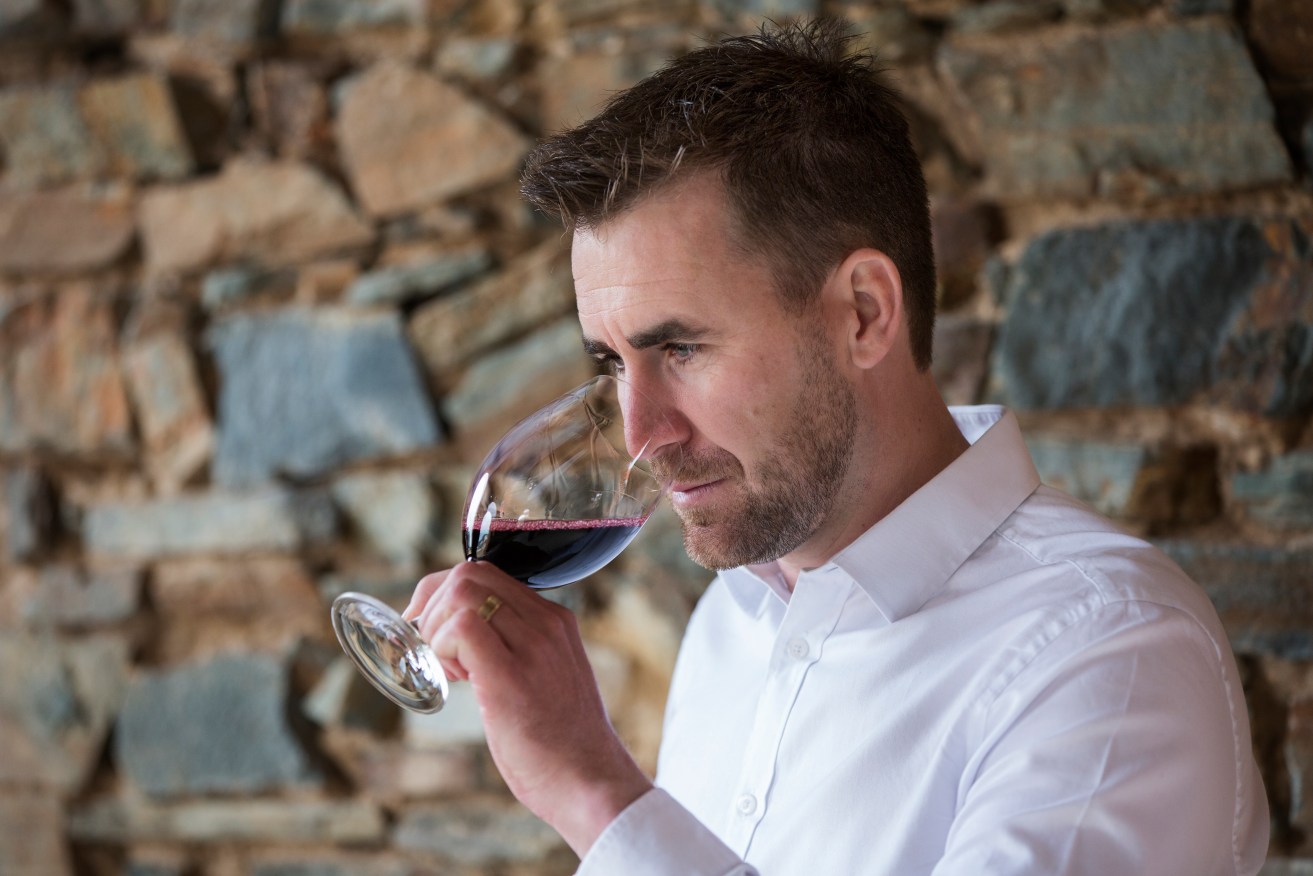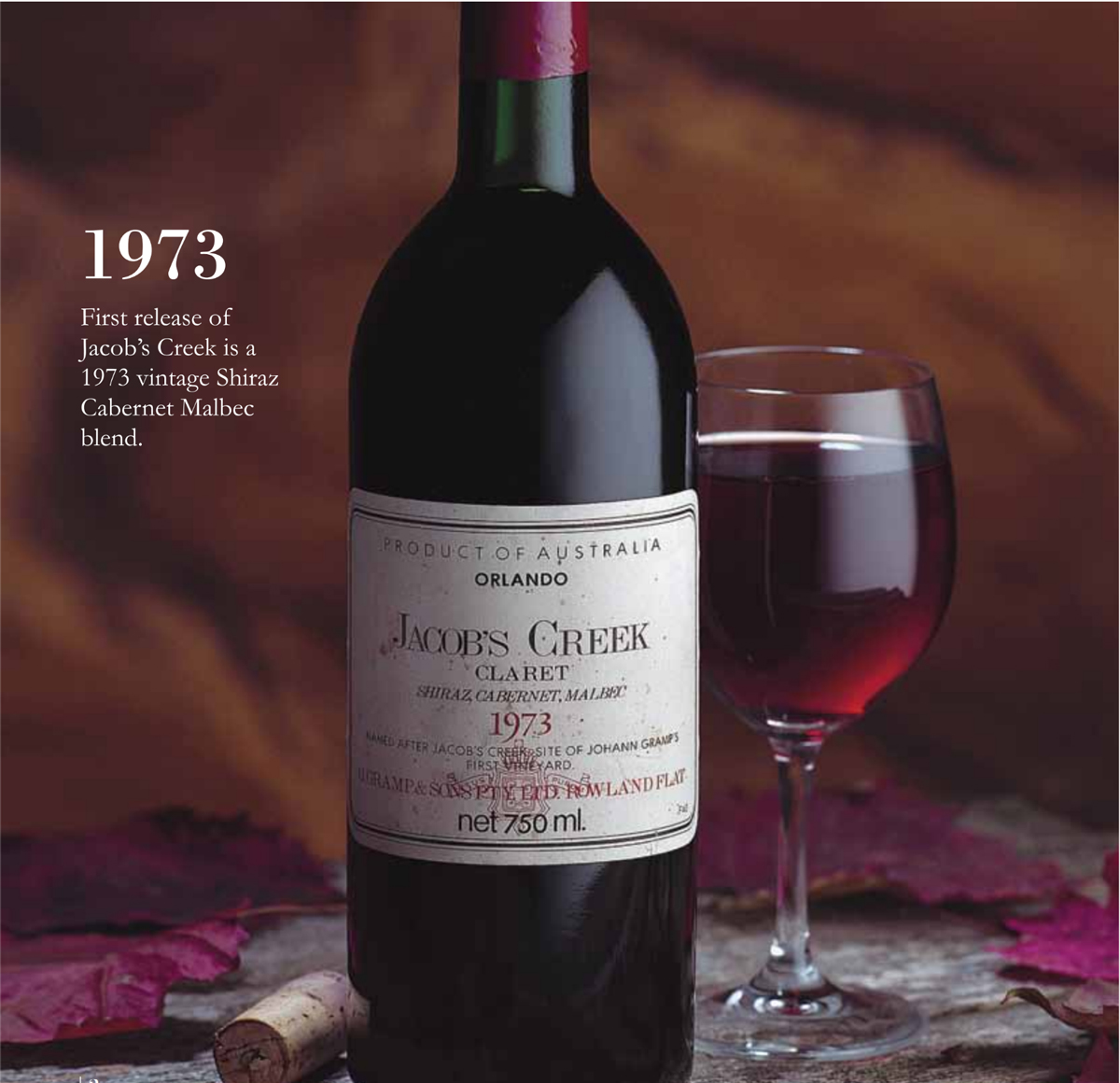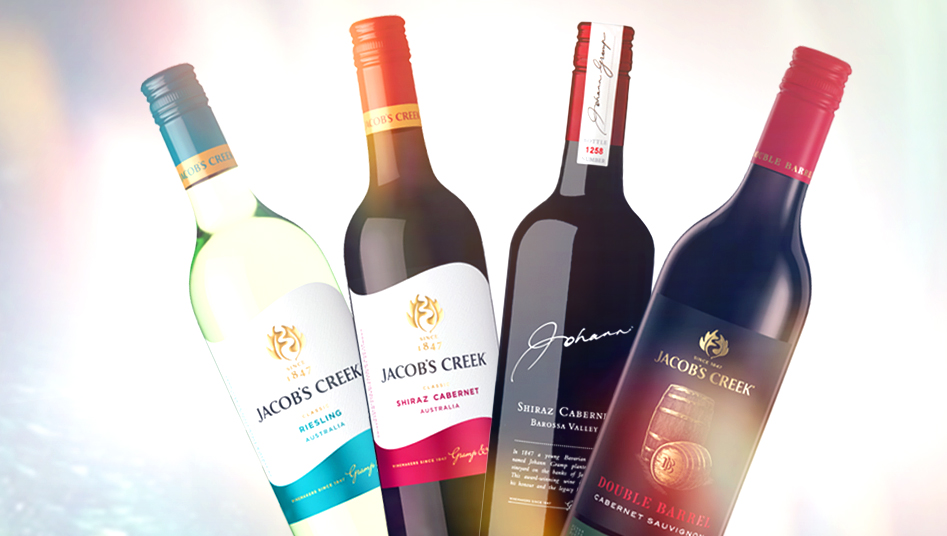Wine reviews: The Creek keeps on flowing
Jacob’s Creek has been a flag bearer for accessible Australian wine for many decades, but success for this enduring SA winemaker is about looking forward as much as it is looking back.


Jacob's Creek chief winemaker Dan Swincer: 'We sweat the small stuff as much as the large.' Photo supplied
Where would your vote go for South Australia’s best-known natural feature?
We don’t have a big rock, but we do have a huge salty lake. There’s a lofty mountain – but it’s not that high – and a body of water that can’t be taken too seriously after being commemorated as the comical Sir Murray Rivers QC, a maddening media commentator created some years ago by satirist Brian Dawe.
There are outback Ranges named after a seafaring navigator – go figure – and an island named by the same bloke on behalf of its native hopping animal that is, frankly, embarrassingly short-arsed compared to its better-known mainland cousins.
These are all justly famous SA places. But stay with me here.
Arguably, one of our most famous natural features is a tiny dribble of fresh water that rolls off the Barossa region’s eastern ranges down through the Rowland Flat district, where it joins the North Para River then later becomes the Gawler River before entering the Gulf of St Vincent. Which, by the way, was named by the same fellow responsible for tagging Mt Lofty, and those ranges and that island previously mentioned.
(For the record, in the ouvre of Catholic saints, St Vincent is the patron of vintners.)
This trickle of water is, of course, Jacob’s Creek. While we laughingly love to call even the weakest of our SA waterways “rivers”, fortunately this favourite babbling brook remains faithfully and forever known as a creek. And yes, it’s a real thing, not just a dreamed-up marketing brand like so many cooked-up corporate derivatives.
The place that Jacob’s Creek occupies locally and overseas in South Australia’s identity is all because of the humble wines that take its name and have, in their own right, become global phenomena. For many decades they have been a flag bearer for accessible, everyday Australian wine all around the world.
Millions of people have bought a bottle. Thousands have travelled to where the actual creek crosses the main road through the area, the Barossa Valley Way, and had their photo taken with the bog-standard, department of transport Jacob’s Creek sign. Which, not surprisingly, has been souvenired many, many times, according to neighbours.
And so it has become a place of renown, and one which deserves just a tad more of its back-story to be told. (It is, after all, the South Australian History Festival month.)
Jacob’s Creek, the wine, is a product of one of the original Barossa wine companies, Orlando, now owned by French beverage corporation Pernod Ricard. Orlando was established by Johann Gramp in 1847, after he settled on land beside that trickle of water and planted his first commercial vineyard and made his first Orlando wine in 1850.
But the name of the creek celebrates another migrant before him, the lesser-known William Jacob, an assistant to Colonel William Light when he was first surveying the district. Jacob recognised the potential of the country around the rivulet and in the late 1830s into 1840 bought and settled on land there. Soon his sister Ann and brother John joined William, living in a thatched and reed hut as well as basic tents, tending cows, fowls and dogs, as well as planting crops.
Ann’s diary reveals episodes of dealing with “troublesome natives” and bushrangers. After William died, she was well regarded as a pioneering female landholder. One of her successes was growing some of the earliest vines in the Rowland Flat district. She also was an active member of the Barossa Valley community and social scene, renowned for hosting guests for regular lunches and dinners.
The original Jacob cottage remains on the Jacob’s Creek Visitor Centre site, and is now an tourism accommodation. The creek still trickles by, while upstream closer to the hills, Johann Gramp’s original home has been lovingly restored for specialist visits.

Heritage House – the home base for Jacob’s Creek at Rowland Flat. Photo supplied
Let’s leap forward 120 or so years, during which the family winemaking business of Orlando was incorporated to be Gramp and Sons, remaining a successful producer into the 1960s and ’70s. This was followed by an era of corporate takeovers and a management buyout, before Pernod Ricard took ownership.
In 1973, amid all that corporate noise, a new wine began its 50-year story out of the Orlando stable, and after being launched publicly in 1976 it went on to change the face of not only the business but also the status of South Australian wine in a much wider sense. That one wine was a Jacob’s Creek Claret, one of three new wines at the time bearing different brandings under the Orlando banner – a Riesling, a Moselle and a White Burgundy.
The 1973 Jacob’s Creek Claret was the only red in the new team, a blend of Shiraz, Cabernet and Malbec from three SA regions, designed to be a soft, fruit-forward and drinkable wine released with two to three years’ maturation, relatively inexpensive yet delivering buy-again-and-again quality at the price.

Jacob’s Creek’s original 1973 Claret.
It was an immediate success, growing from just 18,000 cases produced in the first season to 150,00 within a decade. It blew away the other Orlando contenders of the era and stayed on as the sole Jacob’s Creek iteration until a Classic Riesling came along in 1984; now, half a century after the brand began, it’s the second wine to the red blend in production numbers.
By 1990, Jacob’s Creek wines were being sold in 20 countries. A Chardonnay was introduced to the range which was expanding with a Beaujolais Nouveau-style red, a Chablis (later renamed with its white varieties), and a case full of show medals, trophies and awards. By 1993, two million cases of JC were being exported to more than 40 countries, and at the turn of the century that had grown to 4.5 million, escalating it to the world’s most-traded wine brand.
Now there are more than 80 separate wines carrying the JC logo in styles that range from the classic level, to oakier variations, more reserve picks from premium SA sources, spritzes, half alcohol, no alcohol (less than .5 per cent), sparklings, chillable reds, a set specifically recognising Ann Jacobs’ contributions, three finished in whisky and rum barrels, and fine, luxury iterations.
All of these have come to fruition under the creative and commercially conscious eye of senior winemakers during JC’s 50-year run of success, including Philip Laffer in the early days, Bernard Hickin, Rebekah Richardson, Trina Smith, and current chief winemaker Dan Swincer.
While we might too easily gauge the Jacob’s Creek brand by its basic offerings, the exploration of new styles that lead or slip into market trends, as well as allowing the winemaking team some blue-sky experimental space, has always been part of the Orlando company ethos, Swincer says.
Right now, as part of the search for a next possible starring brand in the wider family, there’s a “Greasy Fingers” Shiraz designed for burger bars, a “Wicked Wild” natural style and amber wine trial, an “Aces & Arrows” Wine Co alternative varietal offering, pet nats, chillable reds and so on.
One of them might go on to emulate the push of the original Jacob’s Creek Claret, or perhaps the more recent success of the Double Barrel range (see the Tasting Notes below).
“We can’t stand still simply because of the success of the originals,” Swincer says. “So much more has come in since then.
“You have got to be continually moving, engaging with consumers, understanding the retail space, offering them all something new.”
But still there’s a clear philosophy that underpins the winemaking and the market consciousness of the JC team, from the original design across its 50-year story.
“The idea was to create a wine in the beginning that was more accessible than what was around at the time. It was good quality and everyone could have it,” Swincer says.
“And you kind of think about how that rolls out for what we do with Jacob’s Creek right now. This is the discussion we’re always having: What is Jacobs Creek? What does it stand for?
“It’s about taking high-end wine concepts and regions, and democratising them for the masses, whether that’s entry-level Claret, or Riesling, Chardonnay or Pinot Grigio, Prosecco Spritz half alcohol and chillable reds.
“They’re meant to be clear expressions of that varietal or style in Australia, and to be serious wines at an accessible price point.”
The results of that constant line of thinking have obviously clicked. Yes, the size of the winemaking operation and associated marketing arms brings reaching benefits, but within the Rowland Flat plant there are tanks that measure 1.4 million litres all the way down to 280 litres. Something in there might just be the next big thing.
“Across the entire range there are wines in 70 markets around the world, but we sweat the small stuff as much as the large. That’s where the future lies,” Swincer says.
“They’re all important. We’re not just appealing to an Australian market; we’re appealing to an international market, so they’re ambassadors for Australian wine.”
TASTING NOTES

Jacob’s Creek Classic Riesling 2022
South Australia / 11.9% / $11.99
Almost entirely sourced from Pernod Ricard’s Langhorne Creek vineyard, which says something both about the region’s cooler climes and the learned knowledge of how to leverage that fruit and craft such an extraordinary wine for the price; current-release Classic vintages have often won gold medals and trophies over the years. This one is typically racy while retaining lovely citrus characters and floral notes, and it’s not too aggressive in the acidity stakes either. If you wish to explore the joys of aged Riesling, a rare tasting of 2012, 2009 and 2002 vintages reveals a range of toasty, brown lime cordial notes with retained vibrancy and progressively golden colours. A more specific iteration, available at the Jacob’s Creek Visitor Centre cellar door in the Barossa Valley, a Survivor Vines 2022 Riesling is a deliciously generous style with deeper lime aromatics and richer lime-curd flavours, mouth-filling yet bright and tangy. The Classic, though: bargain of the century.
Jacob’s Creek Classic Shiraz Cabernet 2021
Multi-regional / 13.9% / $11.99
The original JC Classic with close to 50 years’ of learnings in this people’s “claret” style that brings a fruit-aware, medium-bodied, bright feel to the Great Australian Red blend, softly finishing for friendly and immediate drinkability. It’s essentially a 65:35 mix of Shiraz and Cabernet sourced out of the Riverland, Langhorne Creek and the Murray-Darling region. Designed to be released within a 9-12 month window after harvest, this wine will also surprise you if cellared. On the evidence of a recent back-vintage tasting including 2015, 2012, 2004, 1994, 1986 and 1981, its soft tannins remain in sync with its fruit feels, deliciously energetic while maturing. For a wine you would never expect to last so well, it’s a revelation.
Jacob’s Creek Johann Shiraz Cabernet 2018
Barossa Valley / 14.4% / $120
The ultimate expression of Jacob’s Creek winemaking in the “Claret” tradition, luxurious in every way including the packaging. Ominously dark in the glass, with a deepish crimson rim, there’s serious fruit intensity here, concentrated purple to black berried flavours with further interest in a dark chocolate/coffee suggestion deeper down. Elite oak has left its impression in the palate, the mouthfeel firm yet matching the overall power of the wine. A taste of several back vintages shows just how powerful and long-legged it is, the 2013 current release amazingly fresh-faced while earlier iterations, the 2001 for instance, show a more syrupy style that was in fashion, still with great integrity. The 2018 will be released later this year.
Jacob’s Creek Double Barrel Cabernet Sauvignon 2020 (with Irish Whiskey barrel)
Multi-regional / 14% / $25
The gameplan with the Double Barrel range is to engage traditional winemaking oak maturation before a finishing flourish in old spirit barrels. Two others in the series match a straight Shiraz with Scotch Whisky, and a Shiraz Cabernet with Caribbean Rum barrels. The Cabernet variation comes out a treat, its time soaking in a touch of the Irish spirit leaving a subtle caramel/vanilla note threaded through a ripe Cabernet fruit spectrum that is the core pleasure here. (Pernod Ricard owns the Jamieson Irish Whiskey juggernaut, so there’s plenty of back knowledge about how such a pairing might work.) The wine is a warm and gentle hug of a thing, finishing with the faintest of whiskey spirit savouriness. Delicious in its own unique way.




